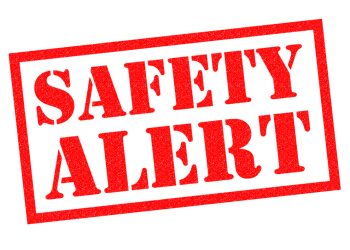Requirements with guidance for use

ISO has issued information note on scope, process, time lines and emerging changes. This communication provides information on the scope, process, timeline and emerging changesof the on-going revision of ISO 14001. It will be updated as the revision progresses.
What is the scope of the revision?
The scope and launch of the revision of ISO 14001 was agreed by ballot of National StandardsBodies (NSB) in late 2011. The revision work commenced in early 2012. The agreed scope ofthe revision is that it shall:
1. be based on the ISO/TMB approved requirements and application guidance related tothe JTCG work on the High Level Structure (HLS) for Management System Standards(MSS) and its identical text, common terms and core definitions (referred to as ‘Annex SLStructure’)
2. consider the final report of the ISO/TC 207 SC 1 “Future Challenges for EMS” StudyGroup
3. ensure the maintenance and improvement of the basic principles of ISO 14001: 2004,and also the retention and improvement of its existing requirements
What are the emerging changes?
Strategic Environmental Management – There is an increased prominence of environmentalmanagement within the organization’s strategic planning processes. A new requirement tounderstand the organization’s context has been incorporated to identify and leverageenvironmentally-related organizational risks, including opportunities, for the benefit of both theorganization and the environment. Particular focus is on issues or changing circumstancesrelated to the needs and expectations of interested parties (including regulatory requirements)and local, regional or global environmental conditions that can affect, or be affected by, theorganization. Once identified as critical, actions to mitigate adverse risk or exploit beneficialopportunities are integrated in the operational planning of the environmental managementsystem.
Leadership – To ensure the success of the system, a new clause has been added that assigns specific responsibilities for those in leadership roles to promote environmental management within the organization.
Protecting the environment – The expectation on organizations has been expanded to commit to proactive initiatives to protect the environment consistent with the context of the organization. The revised text does not define ‘protect the environment’ but it notes that it can include sustainable resource use, climate change mitigation and adaptation, protection of biodiversity and ecosystems, etc. ISO/TC 207/SC 1 ISO/TC 207/SC 1 20 November 2013
Environmental performance – There is a shift in emphasis with regard to continual improvement from improving the management system to improving environmental performance. Consistent with the organization’s policy commitments the organization would, as applicable, reduce emissions, effluents and waste to levels set by the organization.
Lifecycle thinking – In addition to the current requirement to manage environmental aspects associated with procured goods and service, organizations will need to extend its control and influence to the environmental impacts associated with product use and end-of-life treatment or disposal. This does not imply a requirement to do a life cycle assessment.
Communication – The development of a communications strategy with equal emphasis on external and internal communications has been added. This includes requirements on the quality of information communicated and mechanisms to make suggestions on improving the environmental management system by persons working for or on behalf of the organization. The decision to communicate externally is retained by the organization but the decision needs to take into account information reporting required by regulatory agencies and the expectations of other interested parties.
Documentation – Reflecting the evolution of computer and cloud based systems for running management systems, the revision incorporates the term ‘documented information’, instead of ‘documents’ and ‘records’. To align with ISO 9001, the organization will retain the flexibility to determine when ‘procedures’ are needed to ensure effective process control.
How does ISO 14001 revision link with ISO 9001 revision?
There is close co-operation between the committee with responsibility for the revision of ISO 9001, ISO/TC 176/SC 2, and TC 207/SC 1. Both groups benefits from a regularly updated tabular comparison on how various elements of the Annex SL structure is being handled by the ISO/TC 207/SC 1 ISO/TC 207/SC 1 20 November 2013 two working groups. A liaison arrangement exists between the two committees to help understanding and to identify further need for alignment between the two standards. NSB members have been requested to collaborate among their respective TC 176 and TC 207 experts to develop and submit joint comments on issues related to alignment between the two standards.
Source: ISO



























































